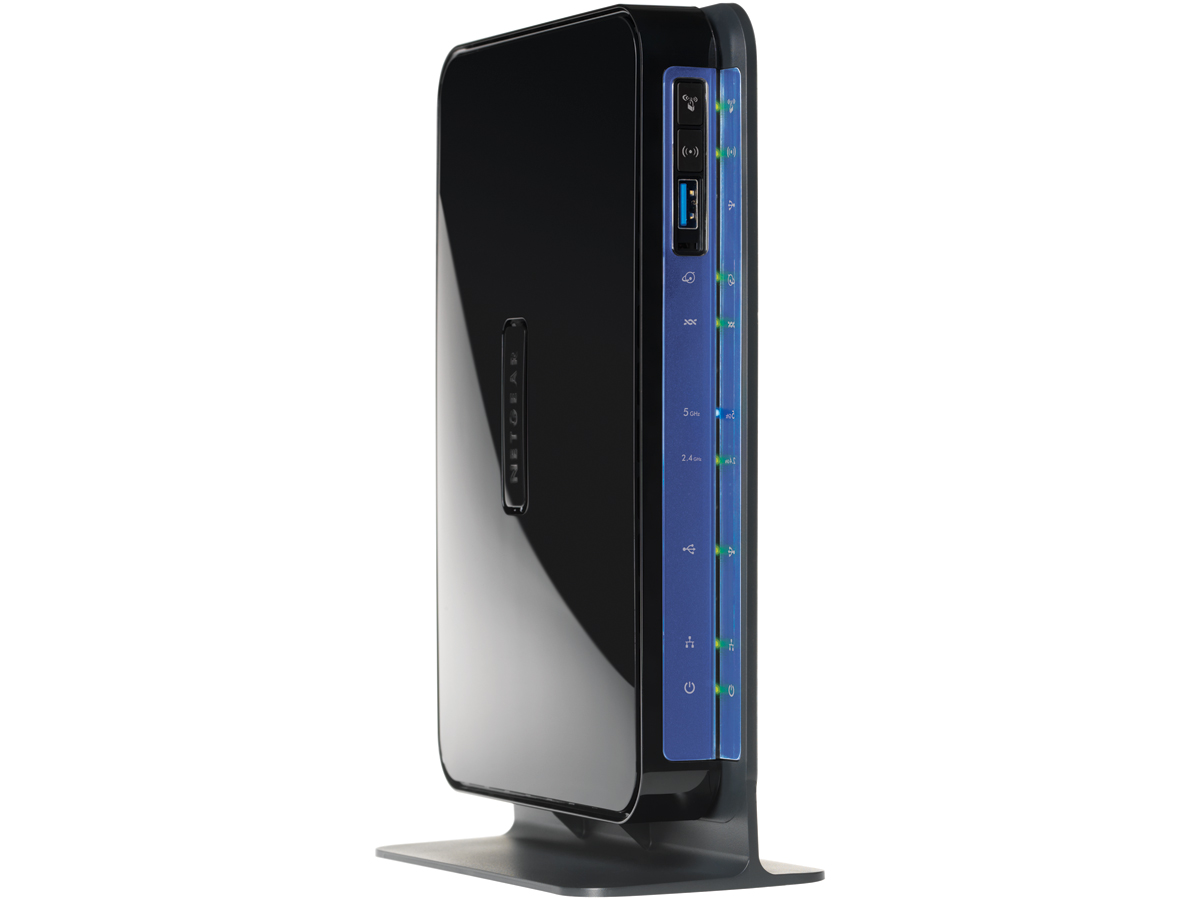Why you can trust TechRadar
Netgear has slowly revamped its consumer units over the year. The latest addition is what we'd consider a somewhat unsightly lip to its front - so it does seamlessly blend in to an removable vertical stand but it seems at odds with the rest of the case.
What hasn't changed is Netgear's fast and easy-to-use to web-based interface. As we've commented on in the past, this remains a welcoming sight, although it does lack any of the flash touches that Netgear's competitors are now using, and is perhaps a sign it finally needs a refresh.
With WPS in place and a semi-automatic ADSL installation the Netgear DGND3700 is certainly easy to get up and running.
It's primed to accept both 2.4GHz and 5GHz connections both at up to 300Mbps, indicating twin antennas for both frequency ranges.
Usefully, both can have up to four SSIDs assigned to them, with each having their own configuration. Alongside this, there's the option for a guest network, as well. We imagine this should be flexible enough for even small businesses.
Unlike the Netgear DGND3300, this unit sports four Gigabit Ethernet ports for full throughput. Up and running we were happily surprised by the 5GHz performance, while good at short range averaging 18.9MBs and peaking at 21MB/s.
Where the Netgear DGND3700 really came into its own was at distance, being multiple times faster than anything else we've tested.
What most impressed us was the standard 2.4GHz performance, where the Netgear DGND3700 simply romped away - so much so that we had to double check we had indeed turned off the 5GHz antenna.
Lastly, ADSL2+ connection speeds were as we'd expect, matching our standard router for download speed and providing a slightly improved upload speed of 1400Kbps over 1200Kbps.
We liked
This is one of the best-performing 2.4GHz routers we've ever seen: at short distance it manages to rival the 5GHz speeds of many routers.
Balancing this, the 5GHz speeds are equally good, also matching the best we've seen at short ranges but greatly outpacing them at distance.
We can certainly see ourselves using the media streaming and NAS features thanks to the twin USB ports, and the enhanced stats and logging features are also appreciated.
We disliked
We're not convinced on the new lip design. The interface also really needs something of a polish, as even Linksys units from a few years back look better but these are more quibbles.
